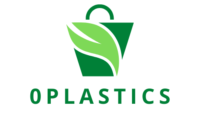Edible packaging options are a sustainable and innovative approach to reducing plastic waste and promoting eco-friendly packaging materials. These materials are designed to be safe for human consumption and environmentally friendly. Here’s an overview of edible packaging and its safety:
Types of Edible Packaging:
- Edible Films: These are thin, flexible layers made from ingredients like seaweed, potato starch, or fruit puree. They are often used to wrap individual food items, such as candies, to reduce packaging waste.
- Edible Coatings: Edible coatings are applied to fruits and vegetables to extend their shelf life. These coatings are made from materials like wax or shellac, which are considered safe for human consumption.
- Rice Paper: Rice paper, made from rice flour and water, is a common edible packaging material. It is used in various Asian cuisines to wrap spring rolls and other dishes.
- Bread-Based Packaging: Some companies have developed edible packaging made from bread or tortilla materials, which can be consumed along with the contents, reducing waste.
Safety of Edible Packaging:
Edible packaging is generally safe for consumption and has several advantages:
- Food-Grade Ingredients: Edible packaging is made from food-grade ingredients, which are rigorously tested for safety. These ingredients are typically recognized as safe (GRAS) by regulatory agencies.
- Reduced Chemicals: Edible packaging often contains fewer chemicals and additives compared to some conventional packaging materials, making it a healthier and more natural option.
- Reduced Plastic Waste: Edible packaging contributes to the reduction of plastic waste, which is a significant environmental concern.
- Biodegradability: Since edible packaging is made from organic materials, it biodegrades naturally, leaving minimal environmental impact when disposed of correctly.
- Customization: Edible packaging can be customized in terms of flavor, color, and shape to enhance the consumer’s experience.
However, there are some considerations and challenges:
- Shelf Life: Edible packaging may have a shorter shelf life compared to traditional packaging materials. Manufacturers need to address this issue to ensure the safety and quality of the product.
- Texture and Taste: The texture and taste of edible packaging can vary. While some consumers may enjoy the experience, others might not prefer it.
- Allergens: Edible packaging may contain allergenic ingredients, such as nuts or gluten. Manufacturers need to provide clear labeling for allergen-sensitive consumers.
- Fragility: Edible packaging can be more fragile than traditional materials, requiring careful handling to prevent damage.
- Regulatory Compliance: Regulatory agencies have specific guidelines for edible packaging to ensure its safety. Manufacturers must comply with these regulations to market their products.
In conclusion, edible packaging is a promising and sustainable solution for reducing plastic waste and promoting eco-friendly materials. It is generally safe for consumption, as it is made from food-grade ingredients and adheres to regulatory standards. However, challenges related to shelf life, texture, taste, allergens, and fragility need to be addressed for wider adoption and acceptance among consumers. The development and improvement of edible packaging options hold great potential for a more environmentally conscious and innovative packaging industry.
